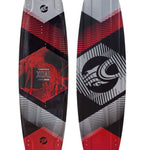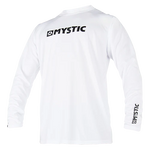You have no items in your shopping cart.
Hand Wing Selection
There are many very good hand wings on the market for wingfoiling these days....this is great news! But it is becoming increasingly difficult to sort through all of the options when there are so many good ones. Luckily, there are some key aspects of each wing that are pros and cons for each person and given riding conditions. These preferences along with the type of "pull" and "pump" a wing produces will help you know which wing to choose for your local area. New riders on the Gulf Coast will need 2 wings eventually but the one to start should be on the large side and have lot of low-end grunt or “pull”, to power through our light wind summers. For performance riders this grunt can be substituted by a wing that pumps well with a higher aspect hydrofoil combination. Nothing beats grunty for new-be progression, however! A favorite saying while talking about wingfoiling in the shop is “you’re either up or you’re not” this is referring to the fact that if you’re out to Wingfoil and you’re stuck wingboarding it is no fun. If there is a combination of larger hydrofoil or more powerful wing that can get you “up” and foiling then most folks are all for it. This is the best way to progress is to get gear that can get you up so you can progress to smaller more high performance gear that will do the same with less limitations.

Pull and Pump
Pull and Pump is how a wing delivers its power to the rider. You can have a wing like the Slingshot Slingwing V2/V3 or F-One Swing V1/V2 that pulls a rider up onto foil and needs little in the way of pumping action to get up onto foil. Another good example is the Cabrinha Crosswing which is made for pulling not pumping. Other wings like the Duotone Unit or Cabrinha Mantis like to be “pumped to produce power and get up on foil. It seems obvious but progression in the light wind area will be easiest with a wing that pulls you up onto foil. Pumping is a necessary skill however and there are other advantages of wing that pump versus pull such as wind-range and surf-ability. In general pumping wings have more range than pulling wings and also have lighter control.
Handles and Control
There are more than a few types of control handles and a myriad of placements on the wing. The most common by far are soft handles which are like a thicker more rigid version of a backpack handle, these are light and pack up very small for transport. They lack some control feed-back from the wing and some say are harder to get to the “sweet-spot” for power delivery. A soft handle wing is the Slingshot Slingwing V2/V3 or the Ocean Rodeo Glide. The next most common type is rigid handles which look like mini booms on handles. These are rigid so give better feedback and control to/from the wing and also make it easy to slightly adjust where you hand is holding the wing to find that sweet spot. You will still need a two-hand grip without a harness for the most part. These are slightly heavier than soft handles and don’t pack up as small. Soft handle wings usually have many handles; whereas, rigid handle wings only have 2 or max 3 handles. An example of a wing with rigid handles is the Cabrinha Crosswing or Duotone Unit. The last and final type of control handle is the boom. This is just what is sounds like. The control is done through a boom just like a windsurfer. So, instead of having handles sewn into the central strut you have a forward and aft connection for an aluminum or carbon boom. These wings are excellent for finding the sweet spot and one-handed riding. Windsurfers also find them to be more comfortable than traditional handles. An example of this type is the Duotone Slick wing. 
Upwind versus Surf
Some wings are better at going upwind because of their design such as the Slingshot Dart or F-One CWC, these wings also have great wind range. If you’re planning to ride upwind to surf down the running swell this will be an important feature along with how the wind surfs behind you when disengaged. Surf wings are very well behaved and will sit behind you disengaged and stable so you can concentrate on surfing. They also go up wind well and have pumping style power in general allowing them to be much more dynamic. Some wings like the Slingshot V3 are gunty wings that also surf very well another example would be the F-One Swing. 
Land and Wingboarding options
Landboarding wings are best if the windtips are turned up and generally in smaller sizes. It is also better to have a lower aspect ratio to help keep the wing tips from hitting the ground or cement. A wing that goes up wind well will also give you the best options in terms of riding directions. The Slingshot Dart is a great example of an ideal land wing with its up turned wings, low aspect design, and upwind ability. Another less expensive option is the Slingshot Blaster in one size only 4.4m.
Wind Range and Gust Control
The area and conditions you plan to wingfoil will determine what wing size and type of wing you will need. For the summer light smooth winds of the Gulf Coast you can go with a grunty wing like the F-One Swing V2 or the Slingshot Slingwing V2/V3, Duotone Unit, or Cabrinha Crosswing. If you’re using your wing on a mountain lake where there is more gusts and a wider wind range you will want to go with something like a Duotone Slick, F-One Strike, Cabrinha Mantis, North Nova, or Ocean Rodeo Glide.
Durability and Reliability
Luckily, these wings are made in the same factory as most kiteboarding kites and made by manufacturers who have been making kites for over 20 years. This means that we had a couple of reliability and durability issues in the early days of wingfoiling, but for the most part these have been quickly resolved. Most wings on the market now are reliable and can be considered durable by kiteboarding standards. You can buy with peace of mind knowing that your wing will last for years to come.







